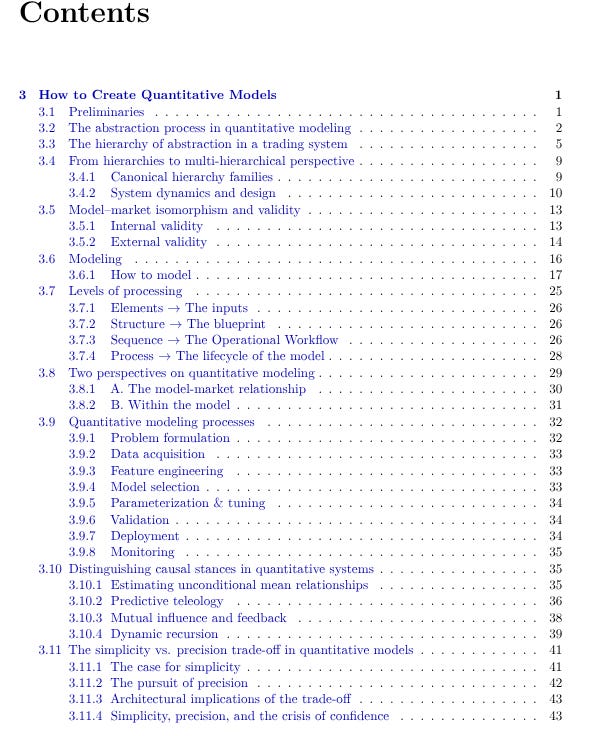Core framework for creating quantitative models
Building a robust quant strategy means navigating a concise set of conceptual pillars—from abstraction choices to causal interpretation—while keeping the process lean enough to ship code. The seven themes below condense an entire chapter’s worth of methodology into an actionable checklist.
What’s inside:
Abstraction hierarchy: Manage complexity via nested conceptual layers—from raw data elements up to portfolio‑level behaviours—so each design decision lives at its natural level of generality.
System architecture & multi‑hierarchical design: Map canonical hierarchy families (data, signals, orders) into interacting dynamic subsystems, preserving modularity and fault isolation.
Model–market isomorphism & validity: Test both internal consistency and external generalisability to confirm the model faithfully mirrors the market mechanism it intends to exploit.
Modelling methodology: Specify how to model by selecting mathematical families, estimation techniques, and diagnostics that best align with the phenomenon and data structure.
Processing‑level workflow: Align Elements → Structure → Sequence → Process to transform inputs into executable strategies through a documented operational lifecycle.
Quantitative modelling pipeline: Follow the end‑to‑end cycle—problem formulation; data acquisition; feature engineering; model selection and tuning; validation; deployment; monitoring—with tight feedback loops for continuous edge renewal.
Causality & simplicity‑precision balance: Make the causal stance explicit (predictive vs explanatory) and navigate the trade‑off between parsimonious clarity and predictive granularity to protect confidence under uncertainty.





